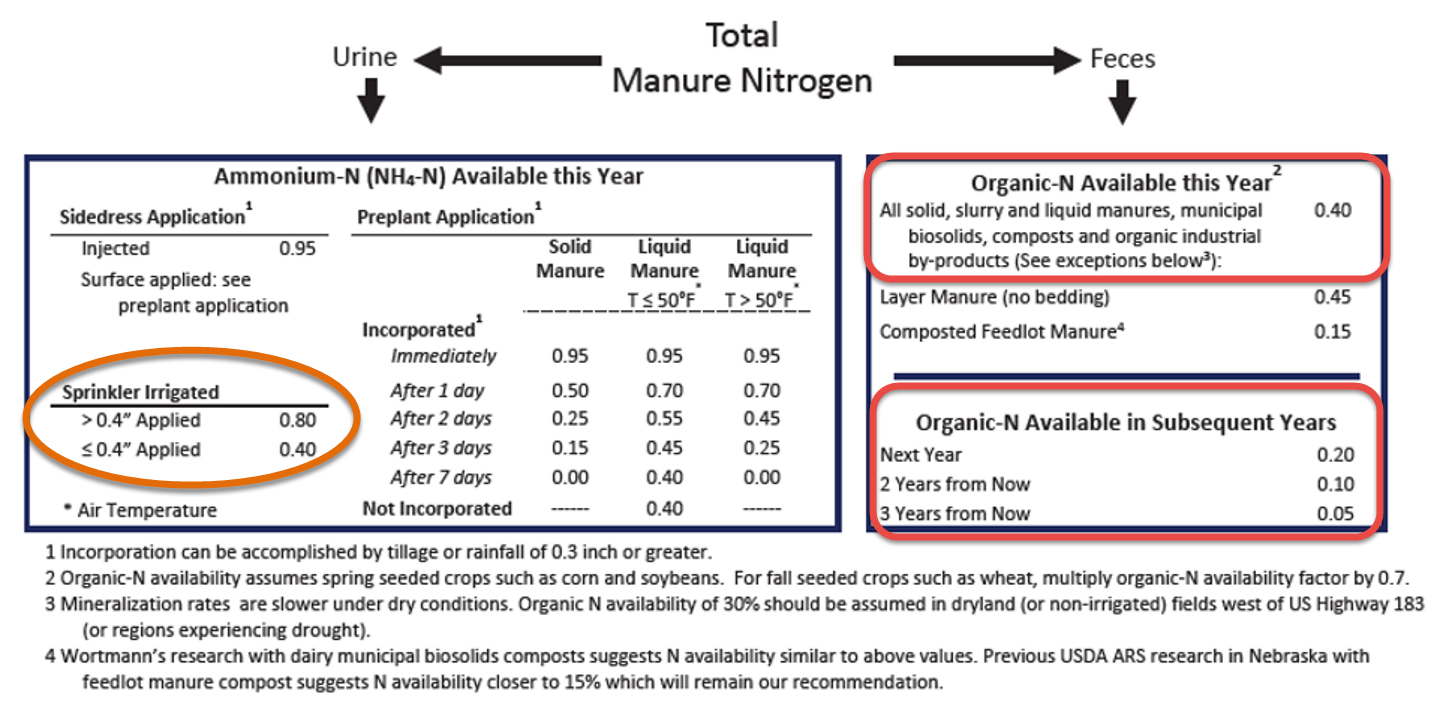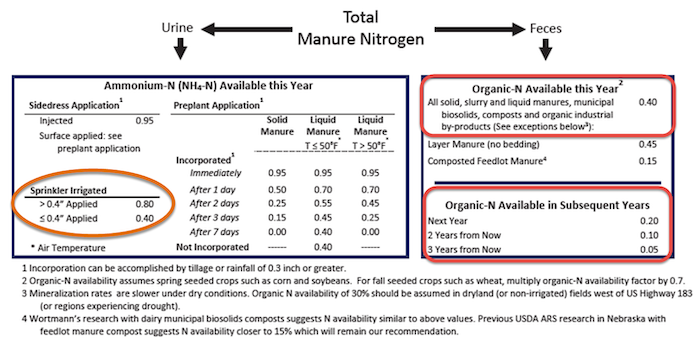University of Nebraska-Lincoln (UNL) has changed recommendations for crediting nitrogen following manure applications for field crops.
Previously, recommended availability factors varied by species, only credited feedlot manure organic N availability as 25% for the first year. However, new research has shown that most manures are similar; and recommended organic-nitrogen availability factors have moved up to 40% in year 1; 20% in year 2; and 10% in year 3 following application for most animal manures, except for poultry layer and composted beef feedlot manures.
Research has also shown less nitrogen loss from the ammonium-N fraction in liquid manure when applied by pivot irrigation at two different rates. The new changes show that the availability factor of ammonium-N from sprinkler irrigation is 80% when applied at more than 0.4 inches and 40% when applied at or less than 0.4 inches.

Previous recommendations are available here.
Overall, research updates have proven that previous recommendations were too conservative and more nitrogen is available to crops. Read more about the research in the article “Proposed Changes to Nebraska Recommendations for Manure Nitrogen Credit.”
With these new nitrogen availability adjustments, total applications of nitrogen (including manure) will be lowered; resulting in reduced leaching loss of nitrate-N and emission of nitrous oxide as a greenhouse gas. Overall, the manure nitrogen crediting increase will likely improve economic values for animal manures. The same manure resources can be spread over more crop acres resulting in expanded acres gaining soil quality and erosion benefits from manure applications.






